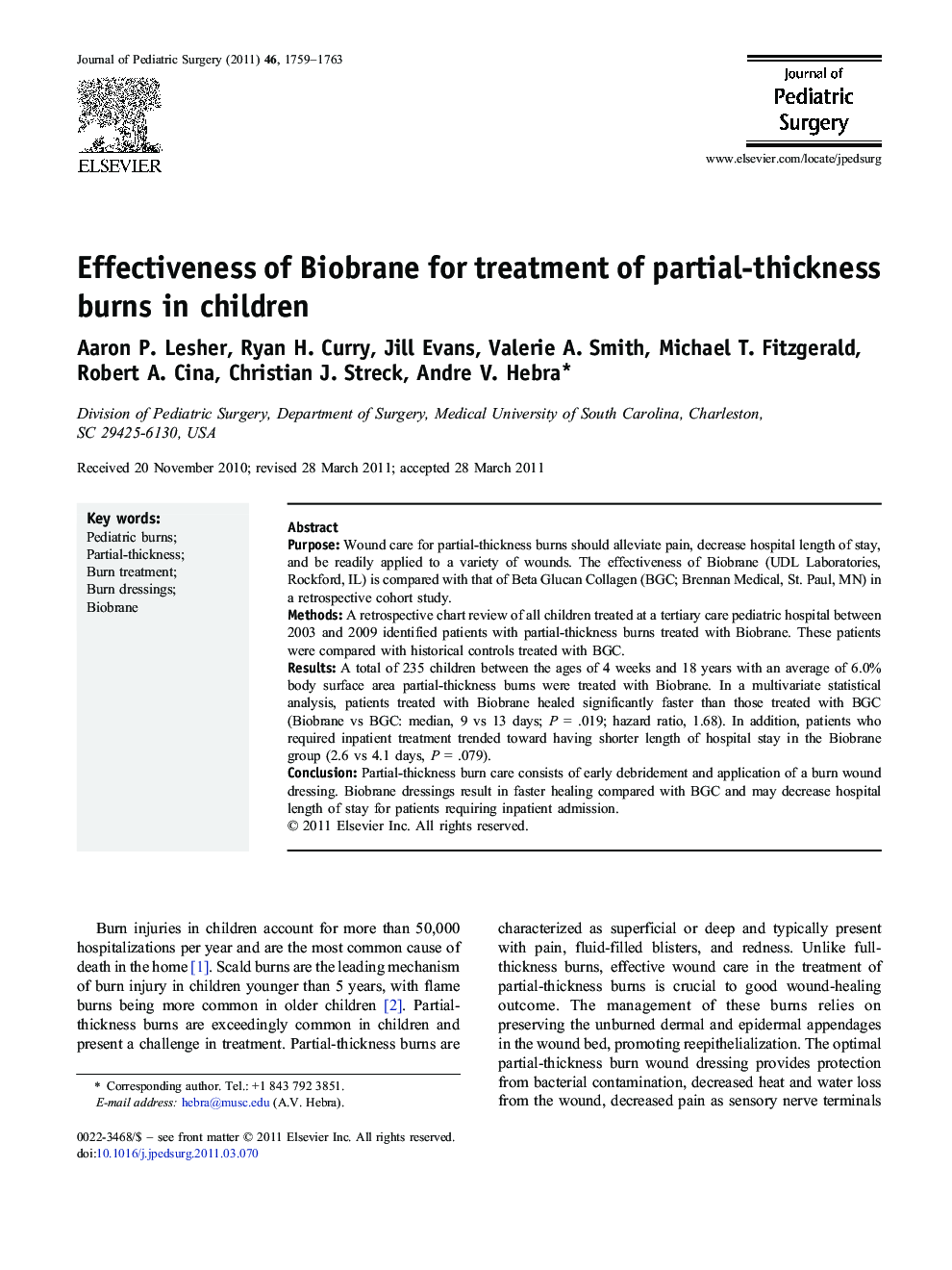| Article ID | Journal | Published Year | Pages | File Type |
|---|---|---|---|---|
| 4156959 | Journal of Pediatric Surgery | 2011 | 5 Pages |
PurposeWound care for partial-thickness burns should alleviate pain, decrease hospital length of stay, and be readily applied to a variety of wounds. The effectiveness of Biobrane (UDL Laboratories, Rockford, IL) is compared with that of Beta Glucan Collagen (BGC; Brennan Medical, St. Paul, MN) in a retrospective cohort study.MethodsA retrospective chart review of all children treated at a tertiary care pediatric hospital between 2003 and 2009 identified patients with partial-thickness burns treated with Biobrane. These patients were compared with historical controls treated with BGC.ResultsA total of 235 children between the ages of 4 weeks and 18 years with an average of 6.0% body surface area partial-thickness burns were treated with Biobrane. In a multivariate statistical analysis, patients treated with Biobrane healed significantly faster than those treated with BGC (Biobrane vs BGC: median, 9 vs 13 days; P = .019; hazard ratio, 1.68). In addition, patients who required inpatient treatment trended toward having shorter length of hospital stay in the Biobrane group (2.6 vs 4.1 days, P = .079).ConclusionPartial-thickness burn care consists of early debridement and application of a burn wound dressing. Biobrane dressings result in faster healing compared with BGC and may decrease hospital length of stay for patients requiring inpatient admission.
